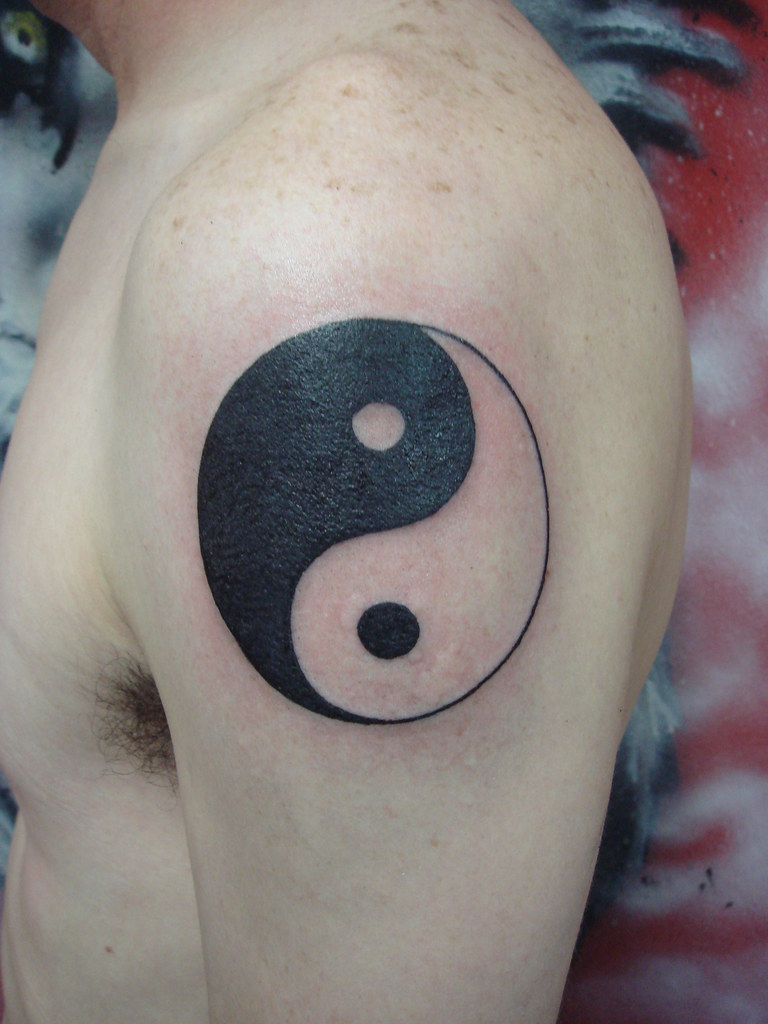The Yin-Yang symbol, also known as the Taijitu, is an iconic emblem originating from ancient Chinese philosophy. It consists of a circle divided into two halves, one black and the other white, each containing a small dot of the opposite color. This symbol is a visual representation of the concept of dualism, illustrating how seemingly opposite or contrary forces may be interconnected and interdependent.
Origin of the Yin and Yang
The concept of Yin and Yang dates back to ancient Chinese philosophy, specifically to the text of the “I Ching,” or “Book of Changes.” The symbol itself is believed to have originated around the 3rd century BCE, during the Warring States period in China. It has its roots in Taoist philosophy, although it is also deeply intertwined with other Chinese belief systems such as Confucianism and Buddhism.
Philosophical Meaning
The Yin Yang symbol embodies several key philosophical concepts:
Yin and Yang as Opposites
In its most basic interpretation, the black half of the symbol (Yin) represents darkness, passivity, and the feminine, while the white half (Yang) represents light, activity, and the masculine. However, within each half, there is a small dot of the opposite color, symbolizing the interdependence and interconnectedness of these seemingly opposing forces.
Balance and Harmony
The essence of the Yin-Yang symbol lies in the idea of balance and harmony. It illustrates that seemingly contrary forces are, in fact, complementary and interconnected. One cannot exist without the other, and harmony can only be achieved through the balance of these opposing forces.
Symbolism in Taoism
In Taoist philosophy, the Yin-Yang symbol represents the interplay of the universe’s fundamental opposite principles. Taoism teaches that the universe is in a constant state of change, and the balance between Yin and Yang is essential for harmony and equilibrium.
Interpretations
The Yin Yang symbol has been interpreted in various ways, reflecting its versatility and depth:
Light and Dark
At its most basic level, the Yin Yang symbol represents the balance between light and dark, illustrating that neither can exist without the other.
Masculine and Feminine
The black half of the symbol (Yin) is associated with the feminine, while the white half (Yang) is associated with the masculine. This interpretation emphasizes the interconnectedness and interdependence of male and female energies.
Active and Passive
Yin is considered passive and receptive, while Yang is active and assertive. This interpretation highlights the dynamic nature of the Yin-Yang relationship.
Influence on Chinese Culture
The Yin-Yang symbol has had a profound influence on Chinese culture, permeating various aspects of life:
Traditional Chinese Medicine:
Yin-Yang theory is fundamental to traditional Chinese medicine. Health is believed to depend on the balance of Yin and Yang within the body.
Feng Shui Applications:
In Feng Shui, the balance of Yin and Yang energies is essential for creating harmony and balance in the home and environment.
Western Interpretations
In recent years, the Yin Yang symbol has gained popularity in the West and has been adopted in various contexts:
Popular Culture References:
The Yin-Yang symbol is often used in popular culture to represent balance, harmony, and the interconnectedness of opposing forces.
Yin Yang Tattoo Meaning
Yin Yang tattoos have become increasingly popular, with many people choosing to get the symbol inked onto their skin. The tattoo holds various meanings:

Balance: A Yin-Yang tattoo symbolizes the balance between opposing forces in life.
Harmony: It represents the pursuit of harmony and equilibrium.
Interconnectedness: The tattoo symbolizes the interconnectedness of all things in the universe.
Conclusion
The Yin-Yang symbol is more than just an emblem; it is a representation of the fundamental principles of balance and harmony in the universe. Its influence extends far beyond Taoist philosophy, permeating various aspects of Chinese culture and gaining popularity in the West. Whether as a philosophical concept, a cultural symbol, or a tattoo design, the Yin Yang continues to fascinate and inspire people around the world.
FAQs
1. What does the dot in each half of the Yin Yang symbol represent?
The small dot of the opposite color in each half of the Yin Yang symbol represents the idea that each force contains the seed of its opposite.
2. Is the Yin Yang symbol only associated with Taoism?
While the Yin Yang symbol originated from Taoist philosophy, it is also intertwined with other Chinese belief systems such as Confucianism and Buddhism.
3. Can the Yin Yang symbol be used in Feng Shui?
Yes, in Feng Shui, the balance of Yin and Yang energies is essential for creating harmony and balance in the home and environment.
4. What is the significance of the Yin Yang symbol in traditional Chinese medicine?
In traditional Chinese medicine, health is believed to depend on the balance of Yin and Yang within the body.

